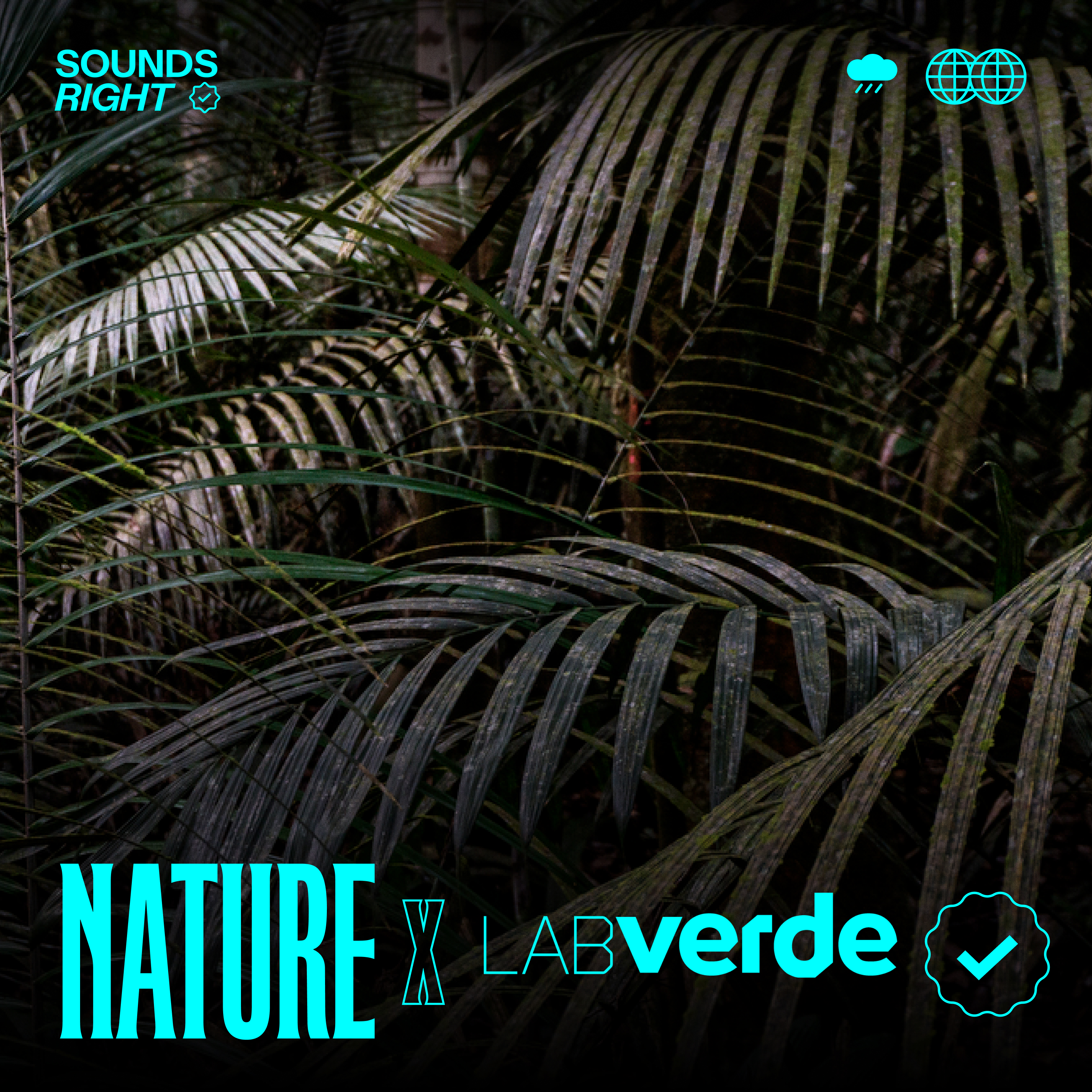NATURE X LABVERDE
(2025)
NATURE x LABVERDE is a new collection of EPs presented by Labverde in partnership with the Museum for the UN and Sounds Right/ Earth Percent. I co-produced these EPs with Lilian Friaji and Tammy Calvacante, writing copy, field recording and sound designing, with contributions on EP2 by Marlon Wirawasu. This project recognizes NATURE as an artist, with the intrinsic rights to her own sounds -- profits from the streaming of these EPs return directly to the Brazilian Amazon to riverine and indigenous communities there.
Labverde is an Amazônia-based arts organization that fosters music and sound art inspired by deep environmental listening. We believe in sound as an immaterial tool to address the climate crisis. Through our partnership with Sounds Right, Labverde channels revenue from Amazonian sounds back to the communities that sustain these ecosystems. By donating part of artists’ royalties to indigenous and riverine groups, the initiative brings new rhythms to the music market while positioning the Amazon as a major rights holder on global streaming platforms—turning the recording industry into an ally for climate resilience.
listen here or click on EP covers below
EP 1: FLYING RIVERS: RAINS IN AMAZÔNIA
The clouds of Amazônia are “rivers in the sky” sustained through cycling of water with the forests they sit atop. They are Earth’s hydrological heart, sustaining systems that are far from Amazônia, yet connected through this vital movement of water. The protection of Amazonian forests is critical to sustain this water cycling and the rich biodiversity the rain makes possible. This EP features recordings of rainfall in the Amazon region of Brazil, from gentle drops on leaves to soothing downpours: the sounds of rains that are vital to life on Earth as we know it.
EP2: ÁGUAS DOCES: WATERWAYS OF AMAZÔNIA
The rivers of the Amazon region carry and feed the life of many ecosystems. These transport routes are vital to humans and beyond-humans alike. Their depth oscillates seasonally, and as climate change intensifies the dry season, remote communities become isolated. The ecosystems and respective soundscapes of these rivers are distinct: the white waters of the Rio Solimões feed the igapó forests and the tea-like black waters of the Rio Negro support the varzea. Further inland, these rivers connect with the cachoeiras (waterfalls) and igarapes (streams) that you also hear on this EP.
EP3: VIBRANT SYMPHONIES: DAYTIME SOUNDSCAPES OF AMAZÔNIA
In Amazonian forests, you do not ever see most species; rather, you hear them. Sonic communication throughout these ecosystems is crucial to ecosystem resilience. The contrasts in soundscapes across time and space are striking; some species call from the high canopy; others from the ground; some at the water’s edge, and others near forest openings from treefalls. The shifts at dawn are especially magnificent: ethereal in some moments and exuberant in others. A broad spectrum of human sounds, or anthrophony, are also common in Amazonian ecosystems.
EP4: AMAZONIAN NIGHTS
In the tropical forest at night, every sound seems more clearly pronounced, informing you of your surroundings. These sounds might be misleading; howler monkey choruses travel long distances, seeming closer than they are; small mammals and reptiles run across the leaf litter, seeming like much larger species. Dusk brings a chorus of some of the most iconic callers of Amazônia, such as toucans and the screaming piha. These transition to katydids and frogs that pierce the night. This EP immerses you in these soundscapes, from a walk through the forest to winds moving through grasses in the Amazonian savanna.
EP5: THE HIDDEN SOUNDS OF AMAZÔNIA
Many species’ sonic communication is beyond the limits of what humans can hear. This includes vibratory sounds transmitted through surfaces, ultrasonic sounds higher in frequency than we can sense, and sounds that are exceptionally quiet or in inaccessible. This EP features a selection of these hidden soundscapes that exist in parallel to that of humans. The sounds include communication by ants, termites, beetles, crabs, and fish, and soundscapes of terra firme soil, mangroves, and from underwater a small stream (igarapé) in the forest. Might we become more conscious of non-human needs and rights through listening to their sonic communication?
Many species’ sonic communication is beyond the limits of what humans can hear. This includes vibratory sounds transmitted through surfaces, ultrasonic sounds higher in frequency than we can sense, and sounds that are exceptionally quiet or in inaccessible. This EP features a selection of these hidden soundscapes that exist in parallel to that of humans. The sounds include communication by ants, termites, beetles, crabs, and fish, and soundscapes of terra firme soil, mangroves, and from underwater a small stream (igarapé) in the forest. Might we become more conscious of non-human needs and rights through listening to their sonic communication?




